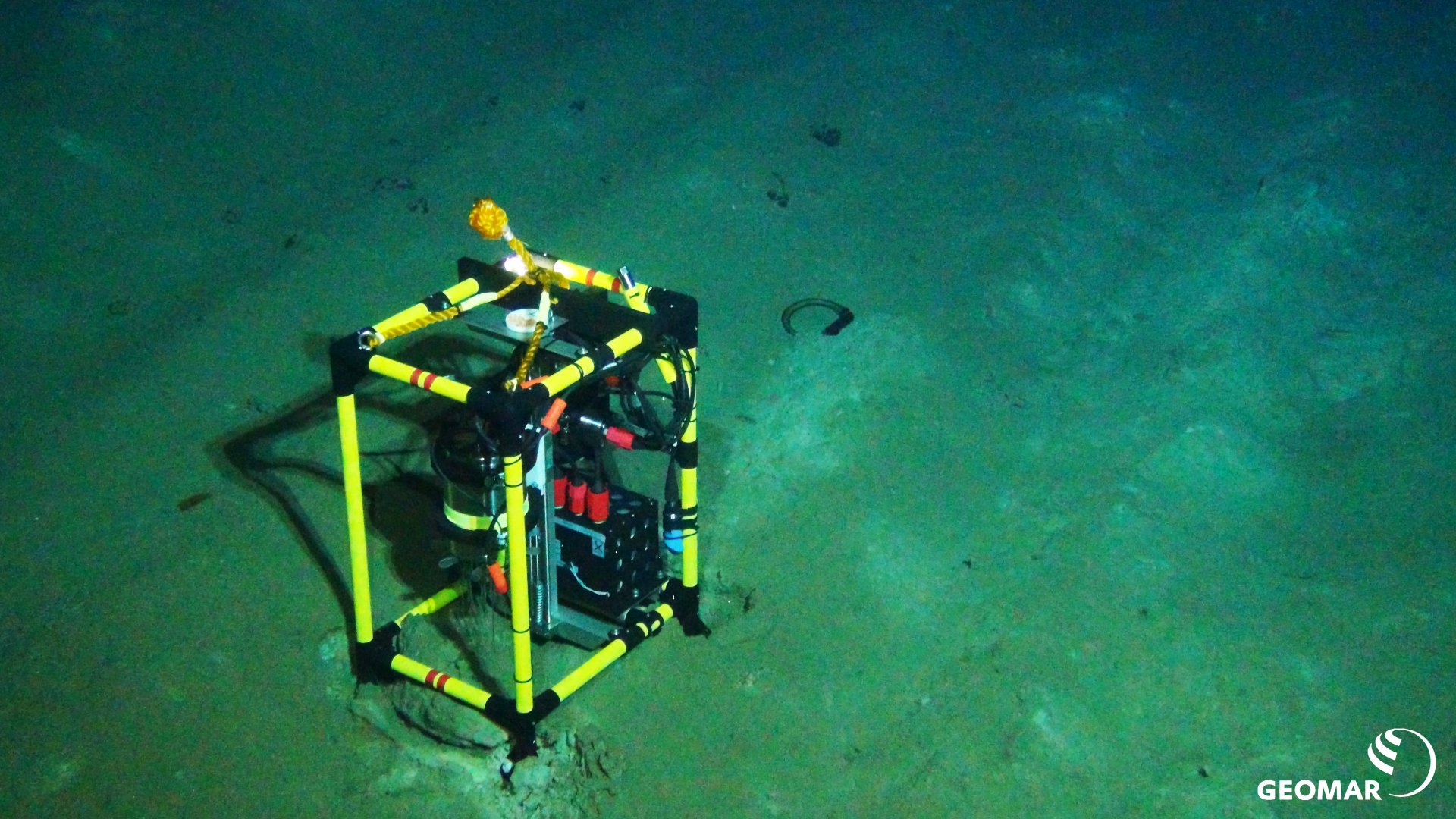 Earth & Space
Earth & Space
Deep-sea mining may threaten microbial communities
Deep-sea mining may soon become a new source of valuable metals, the important components of modern tech. It is becoming commercially viable, but what about its ecological impact? We reveal that deep-sea mining could significantly damage microbes, and it would take decades for microbes to recover their population size and functions.

Have you ever wondered how your smartphone was built? Or how our modern lifestyle can threaten our planet? Modern technologies sustaining our life rely on the availability of valuable metals, their important components. In response to today's increasing industrial demand, and as the supply from land's sources becomes increasingly challenging, the deep-sea may soon become a major source of valuable metals.
Large areas of the deep oceans' floor are covered with cauliflower-shaped rock concretions named polymetallic nodules, rich in metals such as manganese, iron, copper, nickel, and cobalt. Mining the nodules could provide a new supply of these materials, but it would also disturb the seafloor. No commercial deep-sea mining has yet taken place, but this may soon change. Before that happens, we should learn how it impacts the deep-ocean environment and put in place regulations for commercial exploitation.
Earlier studies showed that deep-sea mining has long-term negative effects on animals relying on the polymetallic nodules or dwelling in the underlying sediments. Taking this into account, in our study, we investigated the impacts of deep-sea mining on microbes, which are at the base of the food web sustaining high biodiversity in the deep-ocean.
To do so, we returned to the area rich in polymetallic nodules, where a large-scale seafloor disturbance experiment named DISCOL was carried out in 1989 in the Peru Basin. In this experiment, the seafloor was disturbed and then the surface sediment was redistributed, turned upside down, or stirred up as a sediment plume to cover the surrounding area. Understanding the consequences of this experiment allows estimating possible scenarios of the future deep-sea mining operations.
For this visit, we used a remotely controlled robot that explored the seafloor, conducted measurements at depth, and collected sediment cores. We investigated the density and diversity of microbes in these DISCOL deep-sea sediment cores. We studied their genetic information to discern different microbe species. To understand how microbial communities and their functioning changed over the 26 years, we measured microbial activity directly at the seafloor and in the laboratory, and carried out in-depth analyses of the sediment composition: Firstly, we measured its contents of organic molecules and nutrients, which are important energy sources for microbial growth; Secondly, we investigated the sediment's structure via three-dimensional imaging, revealing burrows created by larger animals or disturbance of the sediment structure.
When we returned to the site, the structures of ridges and furrows, similar to an agricultural field, were still present. Our main finding is that microbial abundances and activities in the deep-sea sediments are significantly reduced 26 years after the DISCOL seafloor disturbance. Microbial cell numbers declined by 30% and their growth rate diminished up to 25%, compared to those preceding the seafloor disturbance. We estimate that the microbe populations will take at least 50 years to cure this damage and grow back to their original population sizes.
The loss of microbial abundances and activities was pronounced within sediments harvested from the upper layer of the seafloor, which was severely disturbed. In the Peru Basin, the oxygenated upper layer provides food and oxygen for microbes to respire and grow. Therefore, removing or damaging this upper layer will have the most severe and long-lasting consequences.
Overall, we found that deep-sea mining and seafloor disturbance lead to crucial damages within microbial communities and functions. Commercial deep-sea mining is planned to commence in the tropical North-East Pacific, which is less productive than the Peru Basin. Once it happens, the recovery of microbial communities will likely take considerably longer than in the Peru Basin's DISCOL area. Whether deep-sea mining is acceptable to retrieve valuable metals for our tech-based life has to be decided by society. But our findings clearly point to further associated risks. If deep-sea mining should become a reality, this study will offer support in devising reasonable strategies for monitoring environmental damages, and hopefully, later recovery.
Original Article:
Vonnahme, T. R. et al. Effects of a deep-sea mining experiment on seafloor microbial communities and functions after 26 years. Sci. Adv. 6, (2020).
Next read: More droughts, more war? by Michèle Müller-Itten , Marc Müller
Edited by:
Dr. Akira Ohkubo , Associate Editor
We thought you might like
Environmental sustainability of nationally recommended diets
Jun 14, 2018 in Health & Physiology | 3 min read by Paul BehrensHigh extinction risk for wild coffee species and implications for coffee sector sustainability
Jul 5, 2019 in Plant Biology | 4 min read by Aaron P. DavisGroundwater pumping poses worldwide threat to riverine ecosystems
Jun 25, 2020 in Earth & Space | 3 min read by Inge de GraafMore from Earth & Space
Discovery of the first radiation belt beyond the Solar System
Jan 27, 2025 in Earth & Space | 3.5 min read by Juan Bautista Climent OliverOne million (paper) satellites
Jan 24, 2025 in Earth & Space | 3 min read by Ewan Wright , Andrew FalleVolcanic Ash: A Nutrient Boost for Reef-Building Corals
Sep 18, 2024 in Earth & Space | 4 min read by Frank Förster , Tom SheldrakeAmmonia Energy: A Call for Environmental Awareness
Aug 29, 2024 in Earth & Space | 3.5 min read by Matteo Bertagni , Robert Socolow , Amilcare PorporatoLikely increase in coral thermal tolerance at a Pacific archipelago
Dec 29, 2023 in Earth & Space | 3 min read by Liam LachsEditor's picks
Trending now
Popular topics


